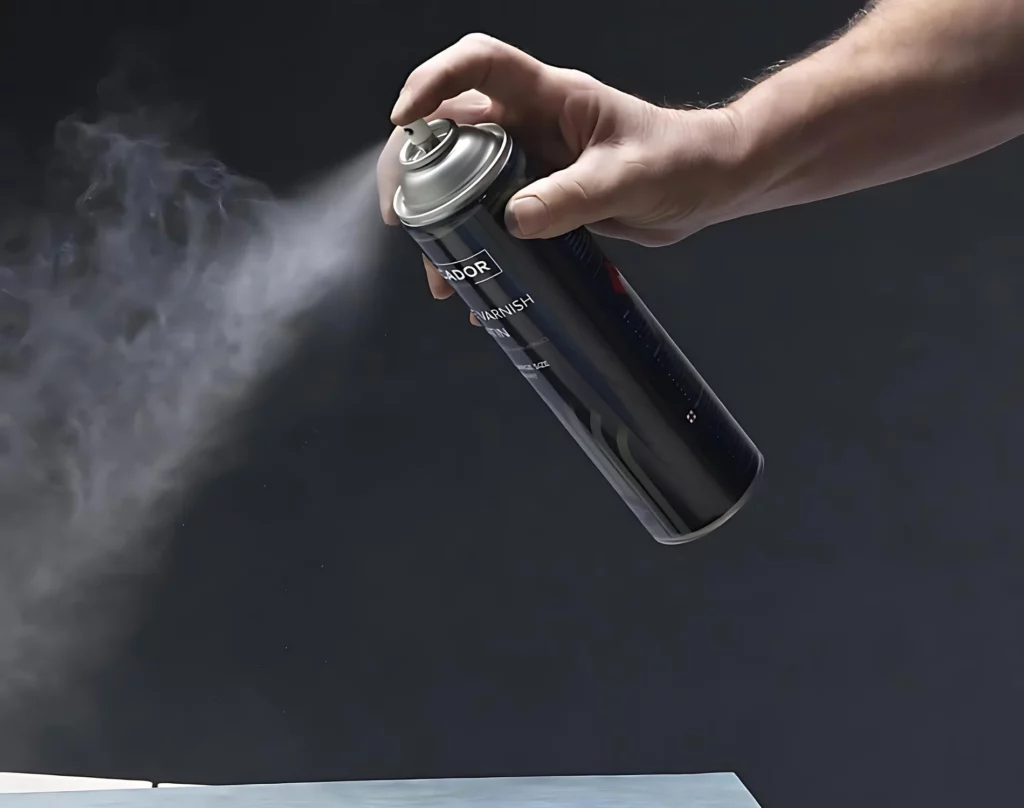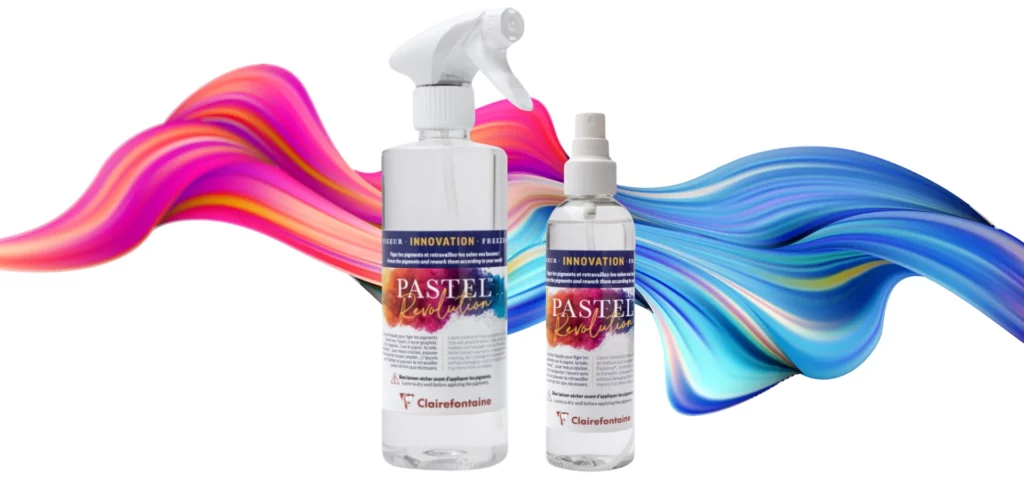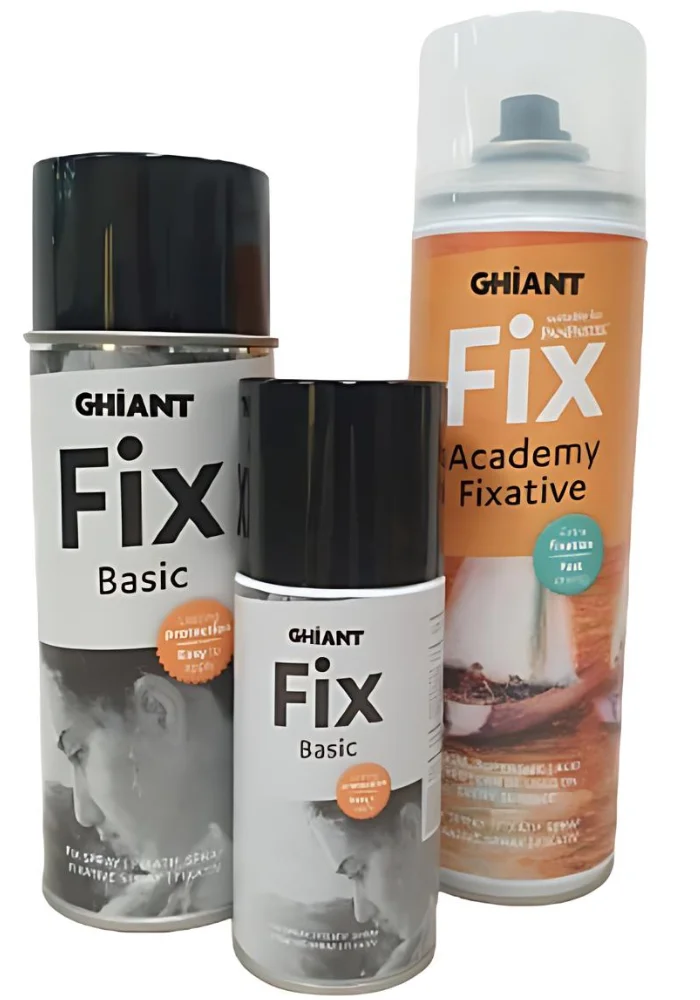Understanding Fixative Sprays
When it comes to protecting and preserving dry media artworks, fixative sprays play a crucial role. These sprays are specially designed to fix and protect dry media such as pastels, charcoal, pastel pencils, and graphite from smudging and rubbing off. By applying a fixative spray, artists can ensure the longevity and integrity of their creations.
Importance of Fixatives
Fixatives are essential for preserving the delicate pigments of dry media artworks. They create a protective layer that prevents the media from smudging or transferring onto other surfaces. This is especially important for artworks that will be handled or displayed, as it helps to maintain the vibrancy and clarity of the colors.
Additionally, fixative sprays help to reduce the risk of accidental damage when working on multi-layered or intricate artworks. By fixing each layer before applying subsequent layers, artists can prevent unwanted blending or smudging.
Before applying fixative sprays, it is crucial to test them on a scrap surface with the same media used on the final artwork. This step allows artists to observe any potential colour shifts that may occur and make adjustments accordingly.
Types of Fixative Sprays
Fixative sprays are available in two main finishes: glossy and matte.
- Glossy Fixative Spray: Glossy fixative sprays provide a shiny finish when applied to the artwork. They can enhance the overall vibrancy and richness of the colours, giving a lustrous appearance. These sprays are particularly suitable for works that require a glossy or reflective surface.
- Matte Fixative Spray: Matte fixative sprays, on the other hand, create a non-reflective and flat finish. They do not alter the appearance of the artwork, maintaining its original matte quality. Matte fixative sprays are often preferred for drawings or paintings where a glossy finish is not desired.
When selecting a fixative spray, it is essential to consider the specific requirements of the media you are using. Different fixatives are formulated to work optimally with various dry media, such as pastels, graphite, or coloured pencils. Be sure to choose a fixative spray that is appropriate for the medium you are working with.
By understanding the importance of fixatives and the different types available. Artists can make informed decisions about the best fixative spray to use for their artworks.
Using Fixative Sprays
When it comes to preserving and protecting your dry media artworks, using fixative sprays is a crucial step. However, it’s important to know the proper techniques and common mistakes to avoid in order to achieve the best results.
Test Before Application
Before applying fixative spray to your final artwork. It is always recommended to test it on a scrap surface using the same media used in your artwork. This test will help you understand how the fixative interacts with your specific materials and the potential colour shift it may cause. Keep in mind that fixatives tend to darken the media.
Proper Application Techniques

Proper application techniques play a vital role in achieving the desired outcome when using fixative sprays. Here are some key tips to keep in mind:
- Shake the can of fixative spray for at least 1 to 2 minutes before use. This ensures that the components are well-mixed, especially for matte finish fixatives. It is also important to clear the nozzle by spraying a few blasts onto scrap paper before applying to the artwork (Grumbacher).
- Maintain a distance of at least 12 inches between the artwork and the spray nozzle. This distance helps to ensure an even and consistent application. It is recommended to overlap the spray by about a ½ inch on each pass. Light coats are preferable, and additional coats can be applied if heavier applications are desired. Wait for 5 to 7 minutes between coats and turn the artwork 90 degrees before each new coat (Grumbacher).
Avoiding Common Mistakes
To prevent unwanted outcomes, it is crucial to be aware of common mistakes when using fixative sprays. Here are a few to avoid:
- Over-application of fixative spray can result in a more dramatic colour shift or even cause pastels to dissolve in the fixative. It is important to apply the spray in light coats, allowing the fixative to dry completely between each application. Be patient and avoid touching the artwork until it is fully dry (Grumbacher).
Best Practices for Fixative Sprays
To ensure the best results when using fixative spray for your artworks, it’s important to follow some best practices. This section will cover three essential considerations: shaking the can well before use, maintaining the ideal distance for spraying, and allowing for proper layering and drying time.
Shake Well Before Use
Before applying fixative spray to your artwork, it’s crucial to shake the can thoroughly. This ensures that the contents are properly mixed and ready for application. For matte finish fixatives in particular, it is recommended to shake the can for a minimum of 1 to 2 minutes before use, as stated by Grumbacher. This step helps to disperse any settling particles and ensures an even spray.
Ideal Distance for Spraying
Maintaining the proper distance between the can and your artwork is essential to achieve an even and effective application of the fixative spray. The recommended distance may vary slightly depending on the specific fixative spray you are using. As a general guideline, it is advised to spray at least 12 inches (30 cm) away from the artwork.
Layering and Drying Time
When applying fixative spray, it is recommended to start with thin layers and build up as needed. This approach helps to prevent over-saturation and potential damage to your artwork. If you desire a heavier application, you can apply additional coats after allowing the previous coat to dry.
To ensure the fixative spray is fully dry before proceeding with additional layers or handling the artwork, it is important to allow proper drying time. Waiting at least 5 to 7 minutes between coats is recommended by Grumbacher. Additionally, turning the artwork 90 degrees before each coat helps to ensure even coverage.By adhering to these best practices, you can enhance the effectiveness of fixative spray and protect your artwork. Remember to always follow the specific instructions provided by the manufacturer of your chosen fixative spray for optimal results.
For more information on fixative sprays for specific media, such as pastels or coloured pencils, check out our articles on fixative spray for pastels and fixative spray for coloured pencils.
Fixative Spray Recommendations
When it comes to preserving and protecting your artworks, choosing the right fixative spray is essential. Here are some highly recommended fixative sprays for various dry media artworks:
Pastel Revolution Fixative

The Pastel Revolution Fixative, also known as the Pastel Freezer, is a reliable choice for artists working with pastels. This fixative freezes pigments onto the paper, creating a stable layer that prevents smudging when additional pastel or pastel pencils are applied later. While slight colour changes may occur upon application. Typically resulting in a darkening of some colours, this fixative offers significant improvement over other options in the market. It is particularly effective on Pastelmat but can also be used on other absorbent surfaces such as papers and canvas. For more information, visit My Art Shop.
Pro Art Fixative Spray

Pro Art Fixative Spray is specifically formulated to safeguard artwork from dust, smudging, and fading caused by direct and indirect UV light exposure. This fixative spray offers clear and reliable protection for various dry artist media such as pastel, pencil, charcoal, and chalk. With a quick drying time of about 5 minutes, it allows for convenient and efficient application. Before using Pro Art Fixative Spray, it is important to shake the can vigorously for one minute. After the agitator rattles to ensure proper mixing of the contents. Apply the fixative by holding the can 25 – 35cm away from the artwork. Firmly pressing the nozzle while moving evenly from side-to-side to achieve a thin, even coat. Avoid overspraying and repeat the process as needed over dried coats. To prevent blockages and ensure future use, clear the nozzle before storing. For more details, visit My Art Shop.
Ghiant Academy Fixative Spray

Ghiant Academy Fixative Spray offers a reliable solution for protecting final drawings in pastel, pencil, or charcoal. It provides a temporary and final protective coating for various dry media and is also suitable for sealing Pan Pastel and Gouache paintings. This fixative spray is workable, allowing artists to edit their artwork even after application. With its fast-drying formula, it ensures a quick and convenient application process. The Ghiant Academy Fixative Spray is acid-free and non-yellowing, guaranteeing that artwork remains pristine over time. It can be used on any surface, making it versatile for different artistic projects. For more information, visit My Art Shop.
Additional Tips and Considerations
When using fixative sprays to protect your artworks, there are some additional tips and considerations to keep in mind. These include using workable fixatives, proper maintenance and storage practices, and understanding the differences between glossy and matte finishes.
Using Workable Fixatives
Workable fixatives play a unique role in the preservation of artwork. They allow artists to spray and then add more marks on the surface after the fixative cures/dries. These fixatives have a matte finish and were historically developed for designers using gouache. It is essential to test workable fixatives on a scrap surface with the same media used on your final artwork before applying them. This will ensure compatibility and prevent any unexpected reactions or undesired effects (Artist Strong).
Maintenance and Storage
Proper maintenance and storage of your artwork can significantly impact its longevity. After applying fixative spray, it is crucial to allow it to dry completely before touching the artwork. This will prevent smudging or potential damage to the work. Additionally, avoid over-application of fixative spray, as it can cause a more dramatic colour shift or even dissolve pastels in the fixative. To maintain the integrity of your artwork, handle it with clean and dry hands, Store it in a protective sleeve or portfolio to prevent dust, moisture, and other potential hazards from affecting the piece.
Differences Between Glossy and Matte Finishes
Fixative sprays are available in both glossy and matte finishes, each with its own aesthetic qualities. Glossy fixative sprays provide a shiny, reflective surface, enhancing the vibrancy and intensity of colours. On the other hand, matte fixative sprays offer a non-reflective surface, providing a more subdued and natural appearance. The choice between glossy and matte finishes depends on personal preference and the desired effect for your artwork. Consider experimenting with both finishes to see which one complements your artistic vision and style.
Fixative Sprays vs. Other Art Supplies
When it comes to protecting and preserving your artworks, the use of fixative sprays is a popular choice among artists. However, it’s important to understand how fixative sprays compare to other art supplies, such as varnishes, and their application on different media, as well as waterproofing considerations.
Comparison with Varnishes
Fixative sprays and varnishes serve different purposes in the world of art. While fixative sprays are primarily used to protect delicate dry media artworks, such as pencil, pastel, and charcoal drawings, from smudging or fading over time, varnishes are primarily used to protect and enhance the appearance of paintings created with acrylic or oil-based media.
Varnishes are usually applied as a final layer to protect the surface of paintings, providing a glossy or matte finish and enhancing the colours. On the other hand, fixative sprays are applied throughout the creation process of dry media artworks, offering protection against smudging and providing a light, invisible layer.
Application on Different Media
Fixative sprays are commonly used on dry media artworks, including pastel, chalk, charcoal, and similar dust-based materials. They help to prevent smudging and preserve the integrity of the artwork. It’s important to choose a fixative spray that is specifically designed for the type of media you are using, such as fixative spray for pastels or fixative spray for graphite.
Varnishes, on the other hand, are typically used on paintings created with acrylic or oil-based media. They can be applied to both finished and dried artworks to protect the surface and provide a protective barrier against dirt, dust, and UV damage. Choosing the right varnish, whether matte or glossy, depends on the desired aesthetic outcome of the artwork.

